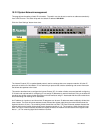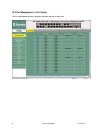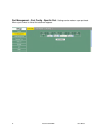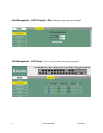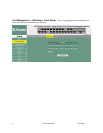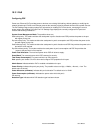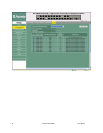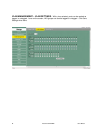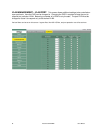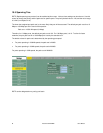10.3.1 PoE
Configuring POE
Power-over-Ethernet (PoE) provides power to devices over existing LAN cabling, without updating or modifying the
network infrastructure. Power-over-Ethernet removes the necessity of placing network devices next to power sources.
The PoE Settings Page contains system PoE information for enabling PoE on the device, monitoring the current
power usage, and enabling PoE traps.The PoE Settings Page displays the currently configured PoE ports and
contains the following information:
System Power Management Mode: The possible values are,
Static with priority: This mode considers the used power is port’s allocation and PSE provides the power to the port
with higher priority first.
Dynamic with priority: This mode considers the used power is port’s consumption and PSE provides the power to the
port with higher priority first.
Static without priority: This mode considers the used power is port’s allocation and PSE first provides the power to the
port which is first required.
Dynamic without priority: This mode considers the used power is port’s consumption and PSE first provides the
power to the port which is first required.
Power Total Allocation: The maximum power which PSE will allow to supply .
Guard Band: The reserved power which PSE reserves for security.
Total Power Consumption: The power which the all PDs consume.
Port: specific port number. Click it to show and configure POE properties for this port.
Admin Status: Indicates whether PoE is enabled or disabled on the port.
Power Priority: Indicates this port’s poe priority. The possible values are High, > Middle, > Normal, > Low. The
default value is Normal.
Power Allocation (milliwatts): Indicates this port’s allocation.The default value is 15.4W.
Power Consumption (milliwatts): Indicates the power value which this port’s
PD uses up.
Detection Type: Indicates which PoE detection type has been chosen.
77 Asante IC3724PWR User’s Manual



